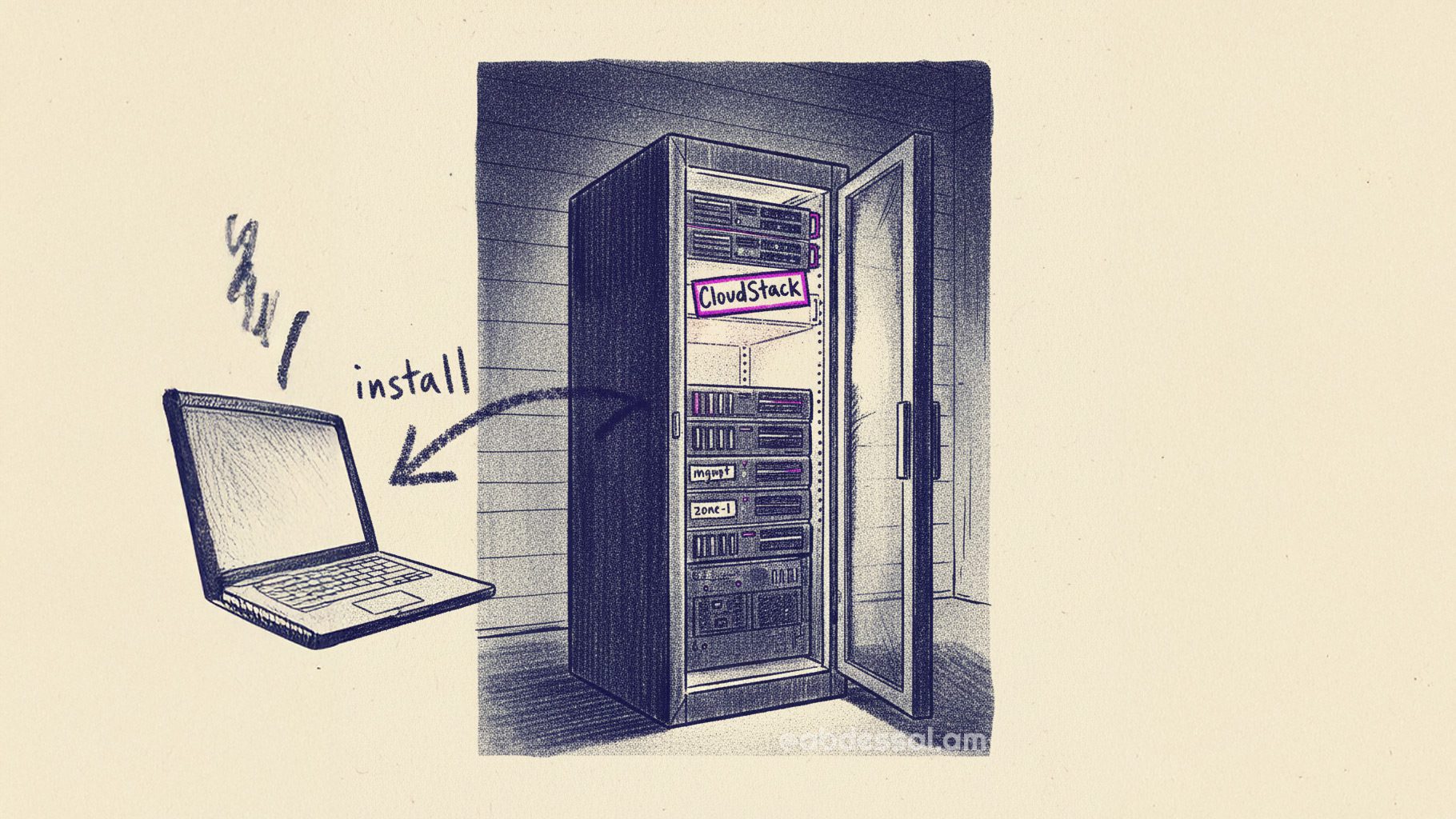Introduction: Why CloudStack (and why now)
Virtual machines aren’t going anywhere. Containers grabbed the headlines, but most real-world stacks still run a hefty VM layer for databases, stateful services, Windows workloads, and anything that needs hard multi-tenancy. Apache CloudStack sits right in that space: a proven, open-source IaaS platform that turns plain servers and switches into a clean, multi-tenant cloud with self-service, APIs, and sane day-2 operations. If you want a production-grade VM cloud without seven different control planes and a PhD in bespoke YAML, CloudStack is refreshingly practical and perhaps one of the best IaaS out there.
What CloudStack is (in plain terms – Noobs)
CloudStack orchestrates compute, storage, and networking across one or more data centers (“zones”) in other words: IaaS. It gives you:
- A polished web UI and comprehensive APIs for tenants and admins
- Role-based access control, projects, quotas, and usage data
- Image/template management, snapshots, and isolated networks
- Built-in virtual routers, load balancers, and VPN/VPC features
- First-class KVM support, plus options for VMware vSphere, XenServer, LXC
- Object Storage Offering Via MinIO, Ceph, Cloudian HyperStore
- Allows CPU, Memory, Storage Overcommit and Supports AMD64, ARM
- Built-in tools for backup and disaster recovery
- Supports a wide range of integrations to fit perfectly to your technology stack
- Billing system integration via API
- Well, It’s FREE to USE, MODIFY or whatever the heck you wanna do with it
Under the hood, it wires together hosts, hypervisors, primary/secondary storage, and L2/L3 networking (VLAN/VXLAN) so users can click “Deploy” and get a working VM with the right firewall, IPs, and routes—repeatably.
Who CloudStack is for
- VPS & hosting providers. Offer VM plans with real isolation, per-account networking, templates, snapshots, and usage metering. Tie it into your billing and you’ve got a clean product your customers can self-serve.
- SaaS teams & platform engineers. Keep a reliable VM substrate for databases, stateful services, Windows apps, and anything that doesn’t fit neatly into containers.
- Enterprises building private clouds. Give devs and data teams a self-service portal with guardrails, while ops keeps control of capacity, compliance, and cost.
- Labs, MSPs, and homelabbers leveling up. Move from ad-hoc hypervisors to a proper control plane with multi-zone scale and no-surprises networking.
If your workloads are VM-centric and you need predictable networking, strong tenancy boundaries, and a UI that mere mortals can use, CloudStack is a great fit.
Why CloudStack for production
- Mature and boring (in the best way). The features you need—HA, networking, templates, upgrades—are battle-tested.
- Straightforward networking. Advanced zone networking with VR/VPC, source NAT, static NAT, port forwarding, LB, and security groups/VLANs that don’t make you cry.
- Operationally sane. Central management server, clear system VMs (SSVM/CPVM/VRs), MySQL/MariaDB backend, and a predictable upgrade story.
- Open source, community-driven. No license wall for core features, and a community that ships.
What this guide covers (noobs to experts)
This article is the front door to a full, production-oriented walk-through of CloudStack on modern Linux (think Ubuntu) with KVM and an advanced-zone design. We’ll start from clean hosts and end with a resilient, multi-tenant cloud your users can actually deploy on.
You’ll get:
- Reference architecture. Single-zone and multi-zone topologies, management server HA, database layout, primary/secondary storage, and where the system VMs live.
- Networking that scales. VLAN/VXLAN choices, virtual router vs. VPC, public/private address planning, routed vs. NATed edges, and how to keep it simple without painting yourself into a corner.
- Production install, not a demo. Secure MariaDB, JVM and system tuning, package repos, management server hardening, and TLS for the UI and console proxy (with reverse proxy options).
- Host prep that sticks. KVM, libvirt, bridge/OVS setup, CPU pinning/NUMA notes, hugepages, time sync, and the small sysctl changes that prevent 3 a.m. outages.
- Templates and images. Building clean Linux/Windows templates, cloud-init/Cloudbase-Init, virtio drivers, metadata services, and post-deploy hardening.
- Storage strategy. NFS/iSCSI/Ceph trade-offs, primary vs. secondary storage, snapshots/backup patterns, and what to test before you invite customers.
- Day-2 operations. Quotas, projects, RBAC, usage events, monitoring, alerting, log capture, upgrades/rollbacks, and common failure modes with quick wins.
If you’re new, you’ll be able to follow step-by-step and understand why each choice matters. If you’re experienced, you’ll appreciate the opinionated defaults, the gotcha callouts, and production checklists you can paste into your runbooks.
What you can run on it
- Web hosting & VPS products. Multi-tenant projects, per-network isolation, templated stacks (e.g., LEMP, WordPress, panel-based hosting), snapshots, and simple L4/L7 in front.
- Private clouds for teams. Give developers self-service VMs with guardrails, network isolation for environments (dev/stage/prod), and predictable egress.
- Personal or lab clouds. A tidy control plane for learning, testing, and running real home services without juggling random bridges and scripts.
Compared with the 4.20 line, CloudStack 4.21 is a release that layers in an extensions/XaaS framework (including “orchestrate anything” with built-in Proxmox and Hyper-V hooks), a technical-preview GPU stack on KVM, new Netris and Cloudian HyperStore integrations, and a raft of operator-quality-of-life upgrades like Management Server maintenance mode, instance “lease” (auto stop/delete), create-from-backup, vTPM, KVM incremental and file-based snapshots, plus CKS enhancements and UI polish (including the new image-selection and OS-category experience). Net-net: 15 new features, ~40 improvements, and 150+ fixes on top of 4.20.1—while 4.20 itself introduced big platform moves like webhooks, dynamic/static routing, Ceph RGW, NSX support, the new Usage UI, and the jump to Java 17/Log4j2.
A quick mindset before we start
CloudStack rewards clarity more than cleverness. Decide on zones, VLAN/VXLAN ranges, storage classes, and image standards up front. Keep the network plan boring, the templates clean, and the upgrade path documented. Do that, and CloudStack will feel less like a weekend science project and more like the dependable backbone of your platform.



